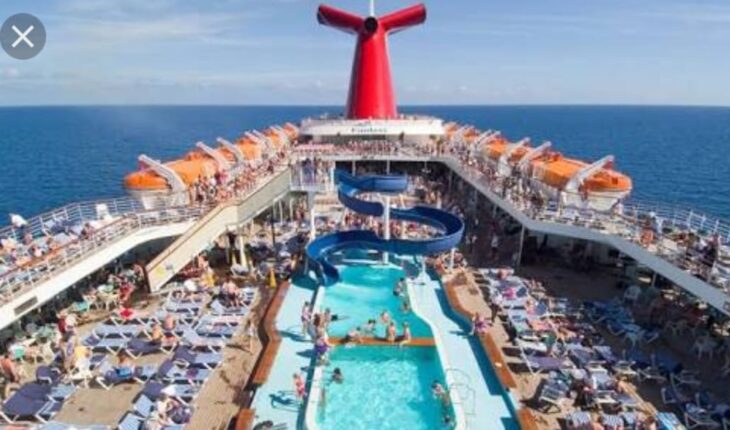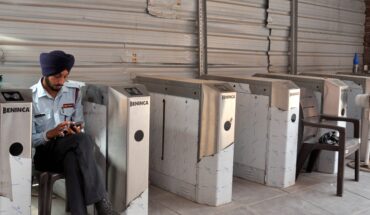Panjim, April 15: The battle for human survival – and destruction of the dreaded COVID-19 virus – went into a second lockdown from April 15th to May 3rd in Goa and Pan-India from mid-April in the wake of the earlier 21-day lockdown, even as the Government and social activists shifted into top gear to battle the disease and its deadly effects.
Goa Chief Minister Pramod Sawant went into overdrive through constant press conferences to keep the public alert about the situation while also highlighting the positive outcome of the continuous process of testing quarantines and suspected corona virus cases and keeping the state’s borders firmly closed against potential disease carriers in human and vehicular traffic.
 While no more COVID suspected cases have found, five recovery cases have been discharged and two more are undergoing treatment before Goa can be declared a COVID-free state, Sawant said, adding that while North Goa is a Red Zone, South Goa could be categorized as a Green Zone by April 17th if no new cases were detected.
While no more COVID suspected cases have found, five recovery cases have been discharged and two more are undergoing treatment before Goa can be declared a COVID-free state, Sawant said, adding that while North Goa is a Red Zone, South Goa could be categorized as a Green Zone by April 17th if no new cases were detected.
Goa has witnessed a total 141 suspected COVID-19 cases of which seven were confirmed and five have recovered with remaining two undergoing treatment. April 13 saw 63 people placed under home quarantine, while around 1611 others isolated themselves in their homes in Goa.
Major government departments would begin working with essential skeleton staff from April 15, while he had spoken to the five COVID patients who had recovered, the chief minister said while noting that the Government was contemplating ‘rapid testing’ of those crossing the borders in essential vehicles.
He said the Secretary Tourism is identifying paid quarantine centres in hotels for the 8,000 Goan seafarers stranded abroad on cruise liners, bulk carriers, once the required permits were given. Stakeholders nominated on the State’s “Economic Revival Committee” would suggest how to revive the Goan economy, he added.
As many as 21,247 Indian seafarers are stranded on 196 ships abroad and in danger of contracting COVID-19, according to a study report by NGO Goencho Awaaz submitted to the Union ministry of External Affairs, urging for bringing them back on emergency basis.
Around 271 British nationals took off in the 22nd relief flight from Goa airport to UK. Meanwhile, the beaches of Goa displayed a deserted look even shipboard tourists and personnel continued with their enforced stay aboard their vessels.
However, the Goa Government’s efforts came under criticism from social activists including advocate Aires Rodrigues, who described the State’s economic situation as “the worst economic crisis ever” and called for “disbanding” the “jumbo” Goa cabinet down to only three ministers alongside doing away with needless corporations, while ensuring fiscal accountability and responsibility in an ongoing sustained process.
Urging for greater compassion and understanding in the present COVID-19 crisis Goa, clinical psychologist and social worker Renuka Figueiredo narrated with sadness the situation from day two of the first lockdown. “The Goa Humanitarian Helpline was set up a day after lockdown with about 700 volunteers statewide and the first day witnessed 39,000 calls being received from people frantic about food, medicine and many other questions. We began doing basic food supplies and went on to providing relief measures in different ways,” she said while mentioning that the enormity of the crisis displayed itself one day when distribution of 100 food packets witnessed over 500 hungry people turning up.
Then the doctor discovered something strange. “We found the migrant workers – who had come from different parts of the country to work here – facing being eviction from their homes here for non-payment of rent, which was caused by lack of job or money in the wake of the COVID-19 crisis,” she said adding that the Helpline volunteers got into action by approaching the affected migrants’ landlords and requesting them not to eject them on compassionate grounds.
“We managed to convince many of these landlords positively and the Chief Minister’s plea in this regard too helped. However, the migrants continue to have a tough time after we go away,” she said while expressing the hope that the Government could provide assistance to the migrants in this regard.
Meanwhile, Goa’s tourism operators are putting up a brave front – despite hotels and beach shack owners facing loses due to lack of tourists – by insisting that the Government ban tourists and close the borders till the COVID-19 crisis ends.
The Government has already started a door-to-door survey about peoples health, besides 164 out of 191 panchayats commencing pre-monsoon activities. Government offices supposed to start from April 15 have been postponed till April 20. While fishing activities have been permitted by the Centre, the Goa government is only allowing door-to-door sale while banning fish markets as a safety measure.
Goa received a cool relief from the sweltering heat of 34.8 degrees celcius as heavy rain showers swept many parts of the state with strong winds even uprooting trees in their wake. Fire department reported 42 incidents of falling trees damaging houses and power lines in Ponda and Kundaim areas.
 Meanwhile, the Corona virus may be locking down the cities, but the mountains in Goa are echoing to the sounds of nature and humans as the fruit season ripens – especially for the “Cazekars” (Cashew farmers) who gather the cashew fruit for making the famed liquor “Feni” while the nuts go to the fireplaces for shelling into snacks.
Meanwhile, the Corona virus may be locking down the cities, but the mountains in Goa are echoing to the sounds of nature and humans as the fruit season ripens – especially for the “Cazekars” (Cashew farmers) who gather the cashew fruit for making the famed liquor “Feni” while the nuts go to the fireplaces for shelling into snacks.
What ‘Tequila’ is to Mexico, Cashew “Feni” is to Goa which has received the recognition for the geographical index (G.I.) for Feni.
One such agriculturist and cashew feni distiller – retired Animal Husbandry official Thomas Fernandes (72) — was busy at his chores to ensure that both tourists and locals get to enjoy the brew. “The cashew season is short – only in summer – due to which we have to collect as much fruit for conversion into feni, neero (sweet juice) and urrak (a beer-like brew), after which we go back to growing paddy in the fields,” he said while moaning about the porcupines devouring his season growth of pineapples and fallen cashew nuts.
Toiling for hours to produce the heady brew which comes from fermentation off four to six days after being crushed in a rocky outflow, his only problem during lockdown is in venturing out of his house to buy the cashew fruit from neighbouring orchards.





